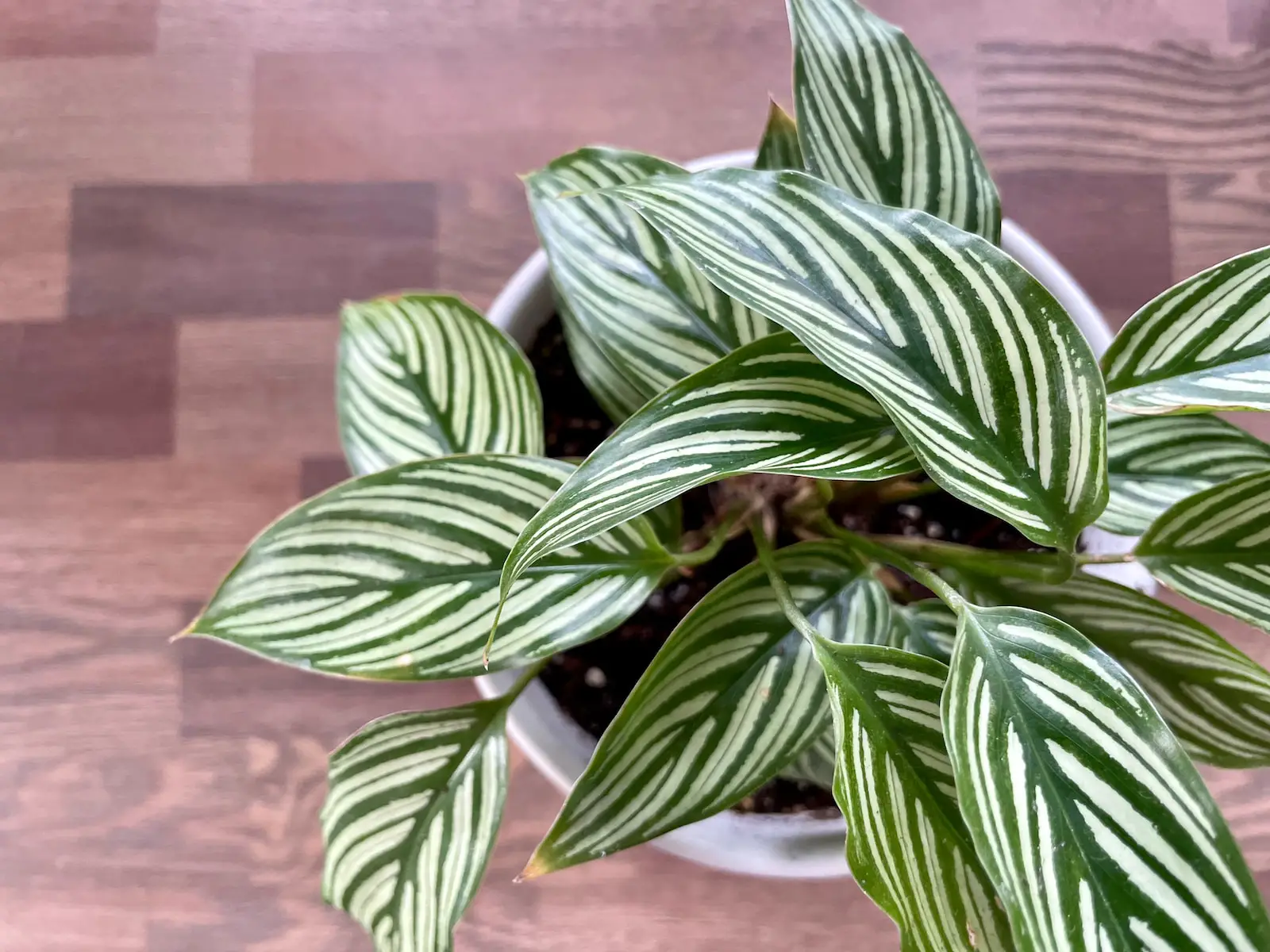Calathea, commonly referred to as the “Prayer Plant,” is a genus of tropical plants that are known for their stunning leaf patterns and their unique way of moving with the sun. During the day, the leaves spread out to catch the light, and at night, they fold up as if in prayer. Native to the tropical Americas, these plants are a beautiful and often intriguing addition to any indoor space.
The large and colorful leaves of Calathea make it a popular choice among houseplant enthusiasts. With over 300 different species, there’s a wide variety in leaf shapes, sizes, and colors. Some species even have leaves with an underside of a different color, adding to the plant’s appeal.
Calathea’s beauty isn’t just skin-deep, as these plants have significance in cultural practices as well. In some cultures, the leaves are used for handicrafts, and in others, they are part of traditional ceremonies. But beyond the aesthetics and cultural importance, Calathea can be a bit finicky to care for, requiring specific conditions to thrive.
| Attribute | Details |
|---|---|
| Common Names | Calathea, Prayer Plant, Zebra Plant |
| Botanical Name | Genus Calathea |
| Family | Marantaceae |
| Plant Type | Perennial |
| Mature Size | 1-3 feet |
| Sun Exposure | Indirect light |
| Soil Type | Moist, well-drained, organic-rich soil |
| Hardiness Zones | 11-12 (Indoors) |
| Native Area | Tropical Americas |
Calathea Care
Calatheas are known to be somewhat demanding in their care. They like consistently moist soil, but not waterlogged conditions. A balanced, organic-rich soil and indirect lighting conditions will keep them happy. Additionally, Calatheas are sensitive to the chemicals found in tap water, so using distilled or rainwater can prevent issues with leaf discoloration.
Calatheas enjoy a humid environment, so placing a humidifier nearby or setting the pot on a tray filled with water and pebbles will help maintain the humidity levels they crave. Regular feeding during the growing season and the right soil mix will also contribute to a thriving plant.
Light Requirement for Calathea
Calatheas need indirect light and should be protected from the harsh rays of direct sunlight. Placing them in a spot with filtered or diffused light, such as near a window with sheer curtains or under a grow light, will provide them with the lighting conditions they need without risking leaf burn.
Soil Requirements for Calathea
Calathea prefers a well-draining, organic-rich soil. A mixture of peat, pine bark, and perlite or sand will create an ideal growing medium. The soil should be kept consistently moist, but not soggy, as this can lead to root rot.
Water Requirements for Calathea
Watering Calathea requires a careful balance. The soil should be kept evenly moist but not waterlogged. Watering with distilled or rainwater can prevent leaf discoloration. The plant should be watered when the top inch of soil feels dry to the touch.
Temperature and Humidity
Calathea thrives in temperatures between 65°F to 80°F and prefers high humidity levels. Misting the leaves or using a humidifier can help maintain humidity. Avoid drafts and sudden temperature changes, as this can cause stress to the plant.
Fertilizer
A balanced liquid fertilizer can be used during the growing season, approximately every four to six weeks. Avoid over-fertilizing, as this can cause the leaves to lose their vibrant colors.
Pruning Calathea
Pruning is generally not required for Calathea, except to remove any dead or yellowing leaves to keep the plant looking its best.
Propagating Calathea
Propagation can be done by dividing the plant during repotting. Each division should have some roots and at least one healthy leaf to grow successfully.
How To Grow Calathea From Seed
Growing Calathea from seed is rare and can be quite challenging. It’s generally easier to propagate through division or buy a young plant.
Common Pests & Plant Diseases
Spider Mites
A common pest that can be managed with insecticidal soap.
Root Rot
Often caused by overwatering, can be prevented with proper soil and watering techniques.
Common Problems With Calathea
Browning Leaf Edges
This can be caused by low humidity or water with high salt or fluoride content.
Curling Leaves
Often a sign of underwatering, adjust watering accordingly.
Pro Tips
- Always use distilled or rainwater to prevent leaf discoloration.
- Keep away from drafts and heating or cooling vents.
- Repot every year or two to refresh the soil and check the roots for disease.
- Provide consistent care; Calathea does not like sudden changes in its environment.




